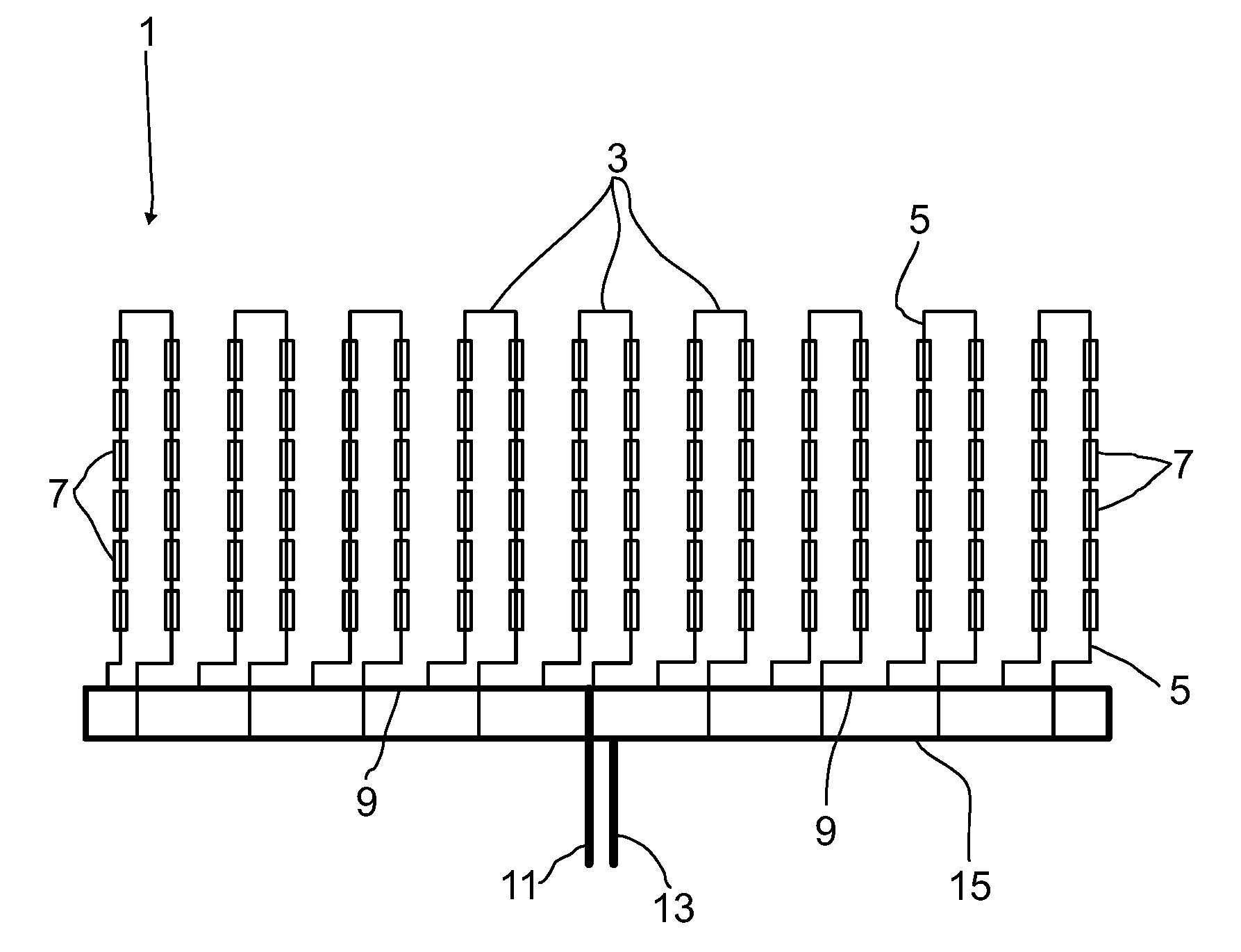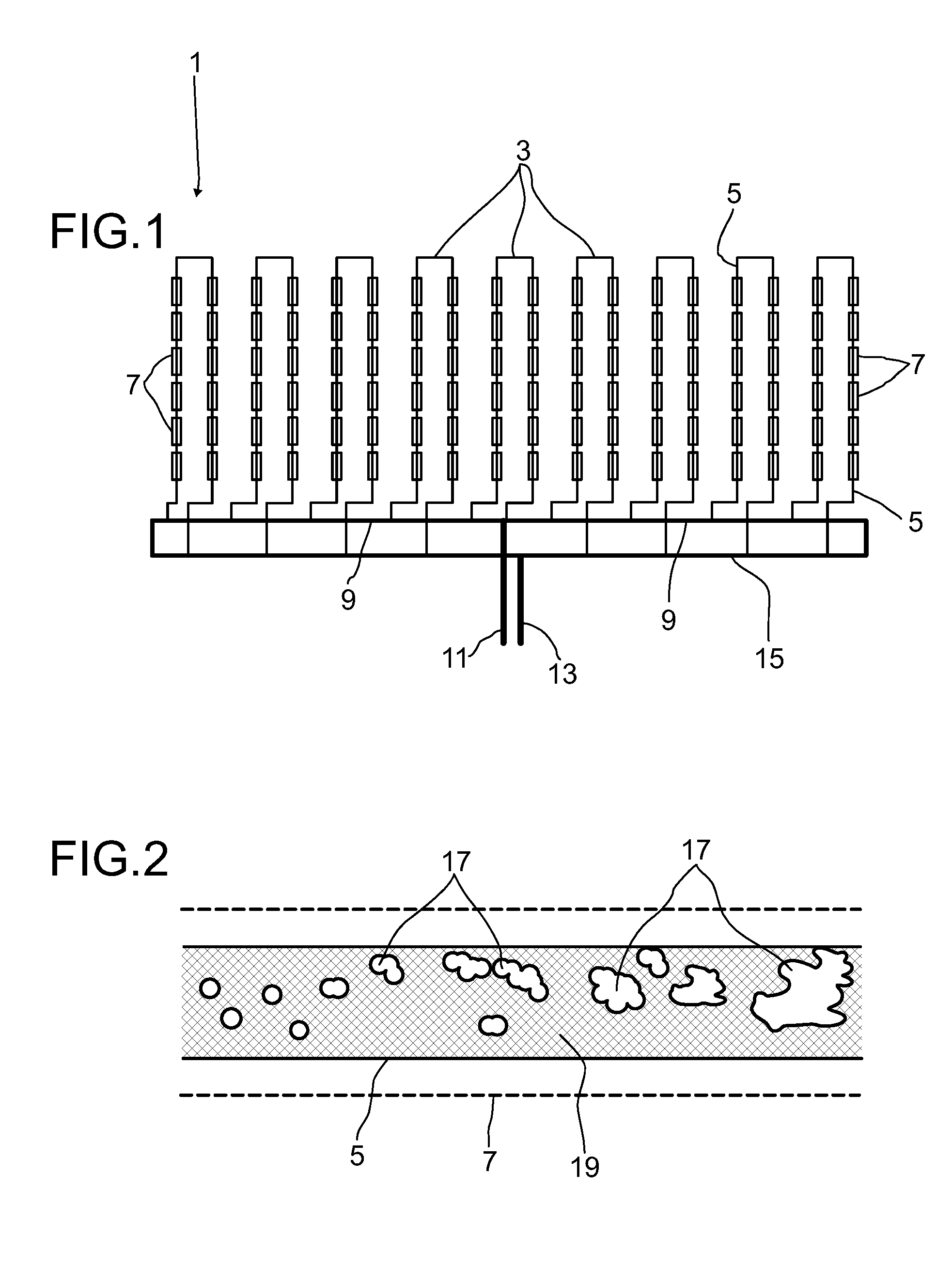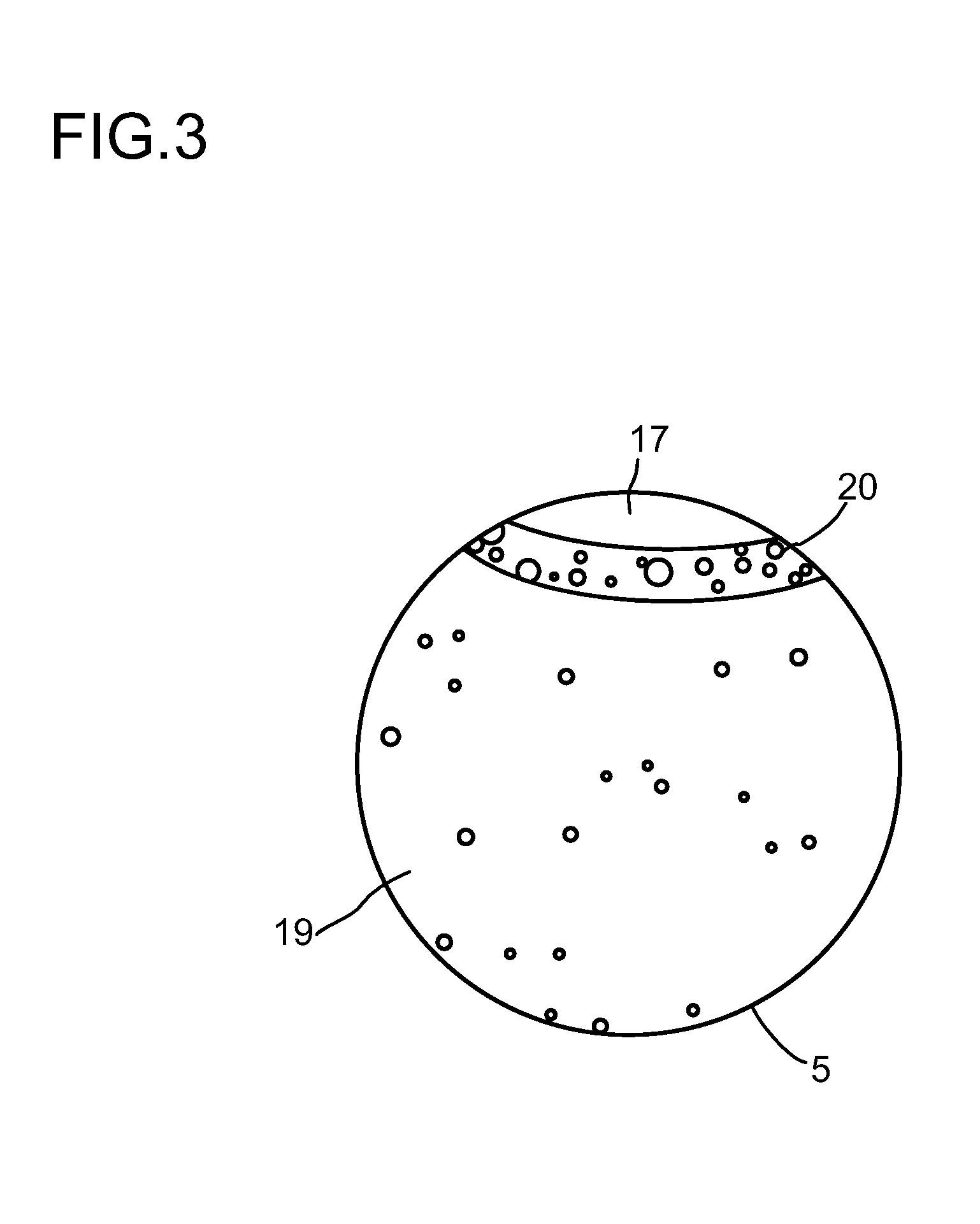Pipeline for carrying a molten salt
a technology of molten salt and pipeline, which is applied in the safety of solar heat collectors, lighting and heating apparatus, furnaces, etc., can solve the problems of high melting point, difficult to reliably operate with molten salts with high melting points, and large commercial losses, so as to reduce the operating temperature of the heat transfer salt and reduce the heat dissipation of the solar array
- Summary
- Abstract
- Description
- Claims
- Application Information
AI Technical Summary
Benefits of technology
Problems solved by technology
Method used
Image
Examples
example 1
[0191]A heating conductor 21 configured as a high-grade steel rod is used for heating a 200 m long pipeline. The heating conductor has a diameter of 25 mm. The heating conductor is in this case produced from high-grade steel St 1.4301.
[0192]The resistivity of the heating conductor 21 is 0.00073 Ω / mm at an operating temperature of 290° C. The specific power required for the heating is 100 W / m. The voltage applied for the heating is 77.3 V and the current intensity is 259 A. The power required on account of the length of 200 m is 20 kW. However, this power is only required during the very short melting time.
[0193]If a higher voltage is used for the heating, it is possible to choose a smaller cross section of the heating conductor. The thermal output dropping across the heating conductor may, for example, be reduced by thyristor-switched pulsed operation.
[0194]If the heating conductor is attached in the pipeline 5 by way of heating conductor holders which are not electrically insulated...
example 2
[0197]A pipeline of high-grade steel 1.4541 has a conductivity of 1.7 m / (ohms·mm2) and an inside diameter of 65 mm and a wall thickness of 2 mm. The cross-sectional area of the pipeline is 421 mm2. The conductivity of the pipe is 716 m / ohm. If 90% of the development of heat is intended to take place on an internal conductor inside the pipeline, it is necessary that the internal conductor takes up 10 times the amount of current. For this purpose, it requires a conductivity of 7.157 m / ohm. Copper has at a temperature of 20° C. an electrical conductivity of 56.2 m / (ohms·mm2). This gives a necessary cross-sectional area for an internal conductor of copper of 127 mm2. This corresponds to a copper wire with a diameter of 12.7 mm or three copper wires each with a diameter of 7.4 mm. If an internal conductor of aluminum is to be used, this requires for the same conductivity a diameter of 15.8 mm.
[0198]On account of the very much smaller mass, and consequently the very much smaller heat capa...
PUM
 Login to View More
Login to View More Abstract
Description
Claims
Application Information
 Login to View More
Login to View More - R&D
- Intellectual Property
- Life Sciences
- Materials
- Tech Scout
- Unparalleled Data Quality
- Higher Quality Content
- 60% Fewer Hallucinations
Browse by: Latest US Patents, China's latest patents, Technical Efficacy Thesaurus, Application Domain, Technology Topic, Popular Technical Reports.
© 2025 PatSnap. All rights reserved.Legal|Privacy policy|Modern Slavery Act Transparency Statement|Sitemap|About US| Contact US: help@patsnap.com



